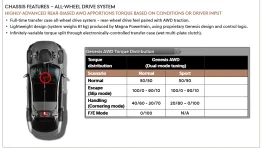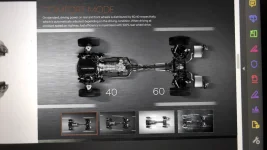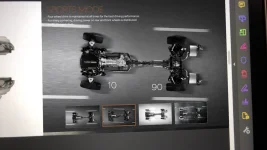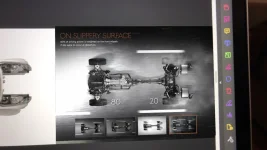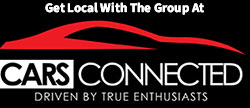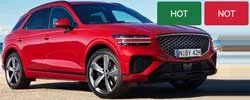Toddasaurus
REEEEEEEEEEEEEEEE!!!!!
- Joined
- Feb 18, 2018
- Messages
- 3,299
- Reaction score
- 4,526
- Points
- 113
- Genesis Model Type
- Genesis G70
Okay, dug into things a bit more and this is what I found.
Magna supplies the hardware for some of Audi's applications, BMW, and Hyundai.
From what I can see, Magna designed a transfer case known as ActiMax. This has been used in most BMW's X-Drive systems, but last year (2017) they developed a new transfer case called EcoMax. The difference is that EcoMax is able to completely disable/disconnect the front wheels from the driveline, whereas the ActiMax transfer case is always connected to all four wheels, though it is able to shift the torque between front and rear up to 100% - however, the details of this are a bit sketchy. Evidently there is still some parasitic drag in place when this is occurring, as there is still some hardware spinning despite all the torque being shifted around. EcoMax is able to remove that drag during 2WD operation. Another feature is that it uses less gear oil than the ActiMax (10oz vs 24oz), as the EcoMax uses a dry clutch instead of a wet clutch, which removes even more drag during cruising. The new design improves fuel economy up to 4%.
Some of Audi's Quattro applications use a Magna supplied coupling, but only used in their cars that have a longitudinally positioned engine (transverse uses HALDEX). This system is called Flex4. Flex4 is able to completely disconnect the rear wheels, effectively making it a FWD vehicle; however, EcoMax disconnects the front two wheels instead. Since Flex4 refers to just the coupling, it is also used in EcoMax. Response times should be the same between Audi and BMW. The Flex4 coupling is advertised as taking 0.3 seconds to switch from 2WD mode to AWD mode and vise versa.
I am unsure about the weight of each of these systems.
HTRAC, sounds like a variation of ActiMax. Specifically, "The system deploys a newly developed right-hand drop version of Magna Powertrain's active transfer case, which enabled Hyundai to overcome challenging underbody packaging constraints." There is no mention of the system being able to completely disconnect from the front or rear wheels, thus may not be as efficient as Flex4/EcoMax. I don't know what style of clutch is used in the HTRAC's transfer case, but it is advertised as weighing "only 61kg." Again, I'm not sure if this is lighter than the other systems, but the articles I've read almost seem to imply that it's smaller and lighter...
Considering the above information, I gotta admit I was wrong. It sounds like HTRAC is essentially the same as last year's X-Drive, but the transfer case just may be lighter, smaller, and shaped differently; but, it works exactly the same.
[Edit: got some of my facts wrong, fixed now.]
[References:]
Why Hyundai has different AWD systems for different vehicles - Autofocus.ca
Magna AWD System Helps Hyundai Genesis Achieve New Levels of Driving Performance
Magna Connects With Disconnecting Axles
Magna supplies the hardware for some of Audi's applications, BMW, and Hyundai.
From what I can see, Magna designed a transfer case known as ActiMax. This has been used in most BMW's X-Drive systems, but last year (2017) they developed a new transfer case called EcoMax. The difference is that EcoMax is able to completely disable/disconnect the front wheels from the driveline, whereas the ActiMax transfer case is always connected to all four wheels, though it is able to shift the torque between front and rear up to 100% - however, the details of this are a bit sketchy. Evidently there is still some parasitic drag in place when this is occurring, as there is still some hardware spinning despite all the torque being shifted around. EcoMax is able to remove that drag during 2WD operation. Another feature is that it uses less gear oil than the ActiMax (10oz vs 24oz), as the EcoMax uses a dry clutch instead of a wet clutch, which removes even more drag during cruising. The new design improves fuel economy up to 4%.
Some of Audi's Quattro applications use a Magna supplied coupling, but only used in their cars that have a longitudinally positioned engine (transverse uses HALDEX). This system is called Flex4. Flex4 is able to completely disconnect the rear wheels, effectively making it a FWD vehicle; however, EcoMax disconnects the front two wheels instead. Since Flex4 refers to just the coupling, it is also used in EcoMax. Response times should be the same between Audi and BMW. The Flex4 coupling is advertised as taking 0.3 seconds to switch from 2WD mode to AWD mode and vise versa.
I am unsure about the weight of each of these systems.
HTRAC, sounds like a variation of ActiMax. Specifically, "The system deploys a newly developed right-hand drop version of Magna Powertrain's active transfer case, which enabled Hyundai to overcome challenging underbody packaging constraints." There is no mention of the system being able to completely disconnect from the front or rear wheels, thus may not be as efficient as Flex4/EcoMax. I don't know what style of clutch is used in the HTRAC's transfer case, but it is advertised as weighing "only 61kg." Again, I'm not sure if this is lighter than the other systems, but the articles I've read almost seem to imply that it's smaller and lighter...
Considering the above information, I gotta admit I was wrong. It sounds like HTRAC is essentially the same as last year's X-Drive, but the transfer case just may be lighter, smaller, and shaped differently; but, it works exactly the same.
[Edit: got some of my facts wrong, fixed now.]
[References:]
Why Hyundai has different AWD systems for different vehicles - Autofocus.ca
Magna AWD System Helps Hyundai Genesis Achieve New Levels of Driving Performance
Magna Connects With Disconnecting Axles
Last edited:




